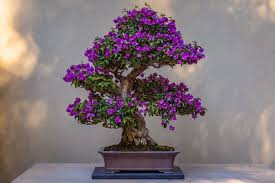Bonsai trees are fascinating and rewarding to cultivate, but they do come with their own set of challenges. Let’s explore some common mistakes and how to avoid them:
Too Much Pruning:
Bonsai trees need regular pruning to maintain their small size. However, excessive pruning can weaken the tree. Each time you prune, the tree expends energy. To allow it to recover, let it grow out occasionally.
Balance is key: Refine trees by leaving each branch to grow out until it has 6-8 leaves. For development, let the tree grow wild to thicken its trunk and shape.
Remember, perfection isn’t necessary year-round; focus on overall health and shape.
Watering Incorrectly:
Misting alone won’t suffice; ensure thorough root watering.
Balance water: Too much or too little can harm roots. Practice this skill by paying attention to your tree’s needs.
Positioning Your Tree:
Proper placement matters for your tree’s health.
Consider sunlight exposure, temperature, and humidity. Avoid extreme conditions.
Rotate the tree periodically for even growth.
Leaves Discoloration:
Yellowing leaves indicate chlorosis due to insufficient chlorophyll (essential for photosynthesis).
Address this by adjusting light exposure and nutrient levels.
Chlorotic leaves are more susceptible to pests.
Leaves with Visible Spots:
Dark patches on leaves may indicate fungal disease.
Use a fungicide as directed to treat the issue.
Regularly inspect your bonsai for abnormalities.
Remember, bonsai care is an art that requires patience and observation. By avoiding these common pitfalls, you’ll be well on your way to nurturing healthy and beautiful bonsai trees! 🌳




